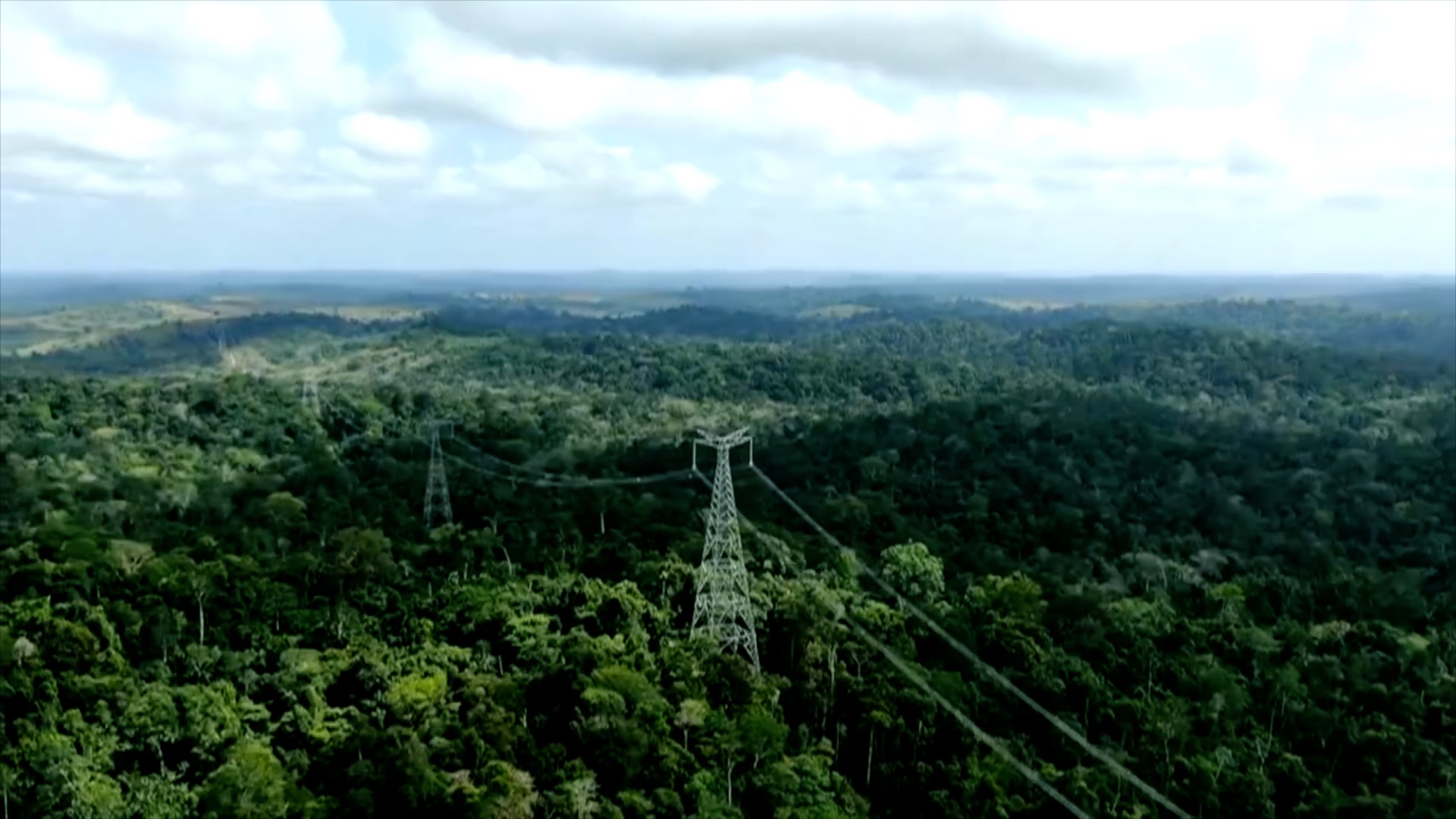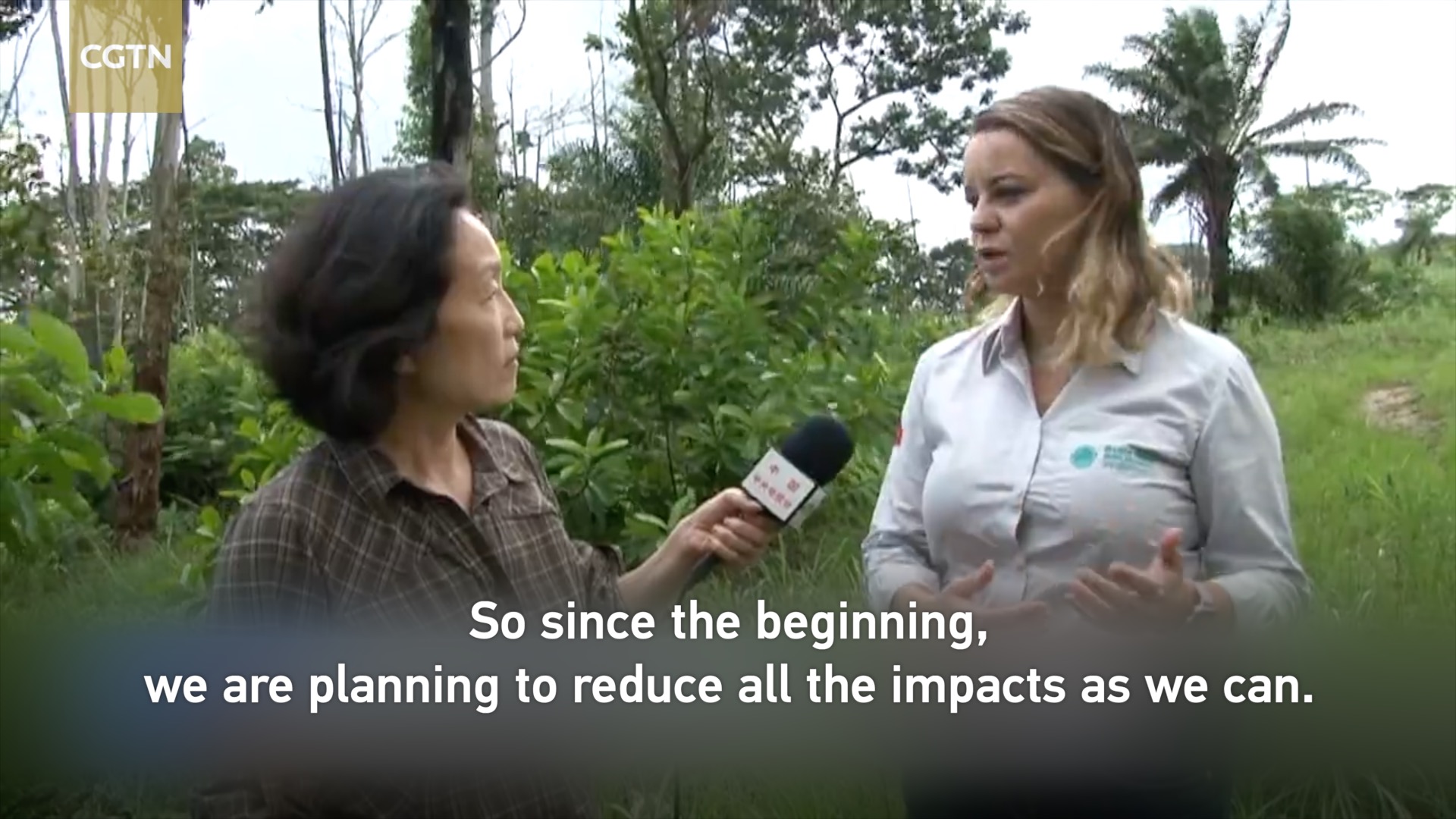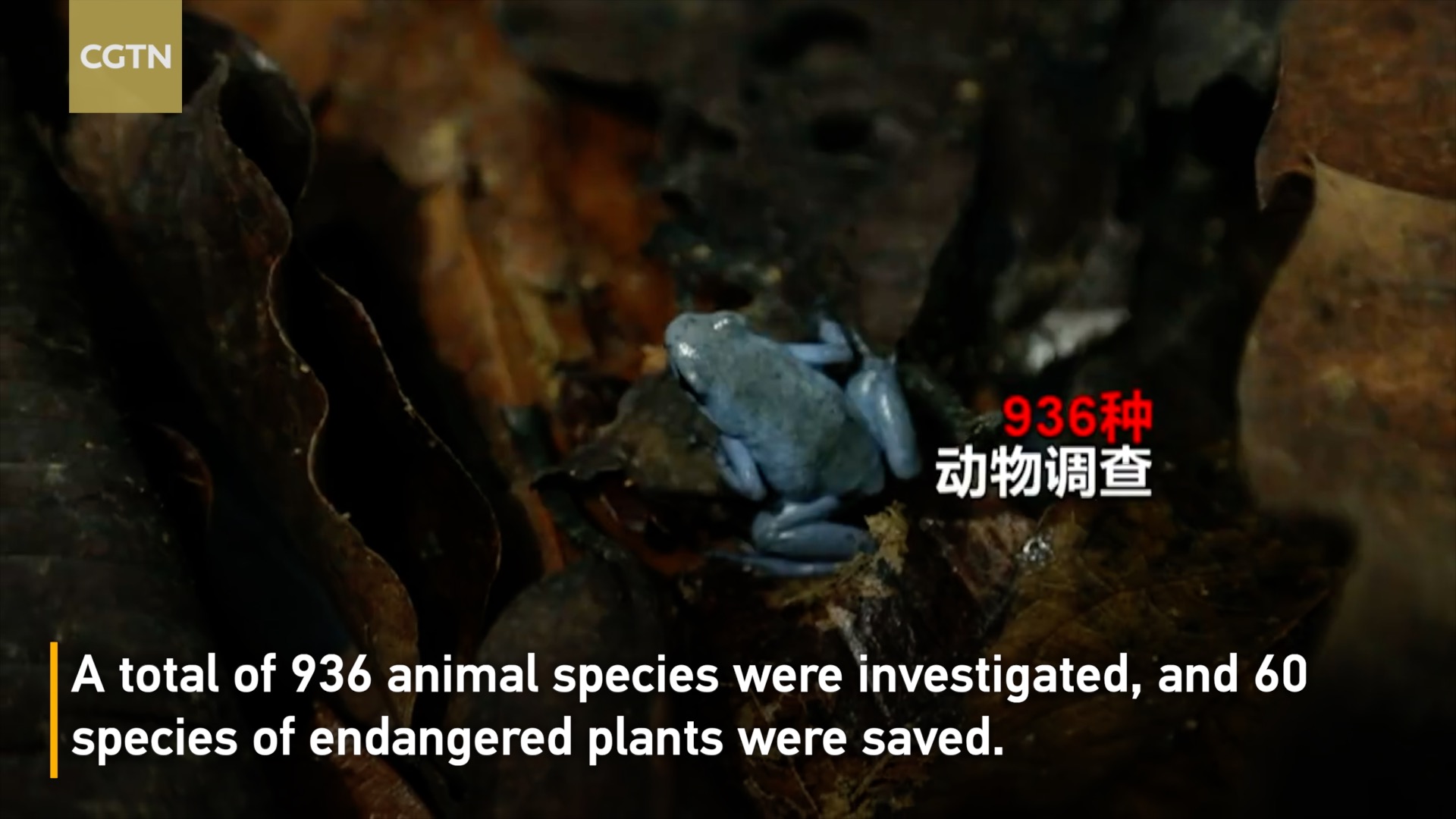Spanning from the Amazon area in Brazil’s northwest to Rio de Janeiro in the southeast, the 2,543-km-long Belo Monte-Rio de Janeiro 800kV power transmission line is the world’s longest.
The super project covers the Amazon rainforest, the Cerrado savanna and the Atlantic coastal mountains, where many rare plants grow.

When the project was finished, the vegetation coverage didn’t decrease; on the contrary, it increased. And behind that result is the work of many Chinese and Brazilians, a concrete example of Belt and Road cooperation.
The Belo Monte-Rio de Janeiro transmission line is the second phase of the Belo Monte project, which is invested in, constructed by and operated by the State Grid Corporation of China (SGCC).

Ana Cecilia is interviewed by a CMG reporter. /CGTN screenshot
A Brazilian environment coordinator, Ana Cecilia, conducted the environmental monitoring work for the project for 11 years. Her main jobs were doing environmental research during the preparatory phase and providing advice for planning the grid line.
“My experience (is that) it was the first project that I saw, that this idea of reducing the impacts was made and conducted by environment division since the beginning of the project, since we are the planning the project,” she said. “The environment (staff) conducted this work together with the engineers from State Grid since the beginning, so the project will be optimizing.”
Conservation has always been a priority. The construction team sought to avoid any interference in natural caves or aboriginal settlements, and they also replanted many trees during the construction.

About 1,100 hectares of vegetation are restored in different places. /CGTN screenshot
As an environmental expert and a witness to the project, Cecilia was impressed by the ecological conservation efforts that were made.
“Generally, we have to compensate the same number of individuals (trees) that you cut. But there are some species that are rarer. So you have to compensate them more. So, for example, if I cut one, I plant one in the regular plant, but for specific individuals, for one that I cut, I have to compensate eight, for example, because they are rarer and in extinction,” Cecilia said.

During the three years, staff members carried out many environmental investigations and conservation works. /CGTN screenshot
Chang Zhongjiao, general manager of the State Grid Brazil Holding, said the success of the Belo Monte project showcases the company’s environmental protection concept.
The Belo Monte phase II project was started in 2017 and completed in 2019. During the three years, staff members carried out many environmental investigations and extensive conservation work.
A total of 936 animal species were investigated, and 60 species of endangered plants were saved. They also protected 710 historical sites and natural caves, and 1,100 hectares of vegetation were restored in different places.
Guided by the idea of “lucid waters and lush mountains are invaluable assets,” China has brought sustainable development to other countries, to benefit the people of all nations and protect the global environment.
Source: CGTN, 12-Mar-2022. https://news.cgtn.com/news/2022-03-12/Why-Brazil-s-vegetation-coverage-rose-despite-new-hydropower-project-18l9lxs9qiA/index.html